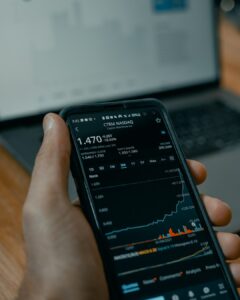Understanding the Technology Behind Forex Machines
Forex trading has become increasingly popular in recent years, with millions of people around the world trying their hand at trading currencies for profit. But have you ever wondered how the technology behind forex machines works? In this article, we will delve into the world of forex technology and explore the key components that power these machines.
At its core, forex machines are essentially computer programs that analyze financial markets, execute trades, and provide real-time market data to traders. These machines are powered by a combination of hardware and software, all working seamlessly together to provide traders with the information they need to make informed trading decisions.
Let’s start with the hardware. Forex machines require powerful computers with high processing capabilities to handle the complex calculations involved in analyzing market data and executing trades. These computers are equipped with advanced processors, large amounts of RAM, and fast internet connections to ensure smooth and efficient operation.
One crucial hardware component of forex machines is the server. Servers are powerful computers that store and process vast amounts of data in real-time. Forex machines rely on servers to receive and process market data, execute trades, and store historical data for analysis. These servers are typically located in data centers close to financial markets to ensure minimal latency and maximize the speed of data transmission.
Now let’s move on to the software aspect of forex machines. The software is the brain behind these machines, responsible for analyzing market data, generating trading signals, and executing trades. One of the most popular software used in forex machines is called MetaTrader.
MetaTrader is a trading platform that provides a wide range of tools and features for forex traders. It allows traders to access real-time market data, create and execute trading strategies, and manage their accounts. MetaTrader uses algorithms to analyze market data and generate trading signals, which can be customized by traders based on their preferences and trading strategies.
Another essential software component of forex machines is the charting software. Charting software provides traders with visual representations of market data, such as price charts and technical indicators. These charts help traders identify trends, patterns, and potential entry or exit points for their trades. Popular charting software used in forex machines include TradingView, NinjaTrader, and Sierra Chart.
In addition to hardware and software, forex machines also rely on data feeds to receive real-time market data. Data feeds are provided by financial institutions and include information such as currency prices, trading volumes, and other relevant market data. These data feeds are crucial for forex machines to make accurate decisions and execute trades at the right time.
To ensure the security and integrity of the trading process, forex machines also utilize encryption technology. Encryption technology ensures that all communication between the machine and the trading platform is secure and protected from unauthorized access. This is particularly important when executing trades and transmitting sensitive financial information.
In conclusion, forex machines are powered by a combination of hardware and software, all working together to provide traders with the tools and information they need to succeed in the forex market. These machines require powerful computers, advanced software, real-time data feeds, and encryption technology to ensure efficient and secure trading. By understanding the technology behind forex machines, traders can gain a deeper insight into how these systems work and make more informed trading decisions.





